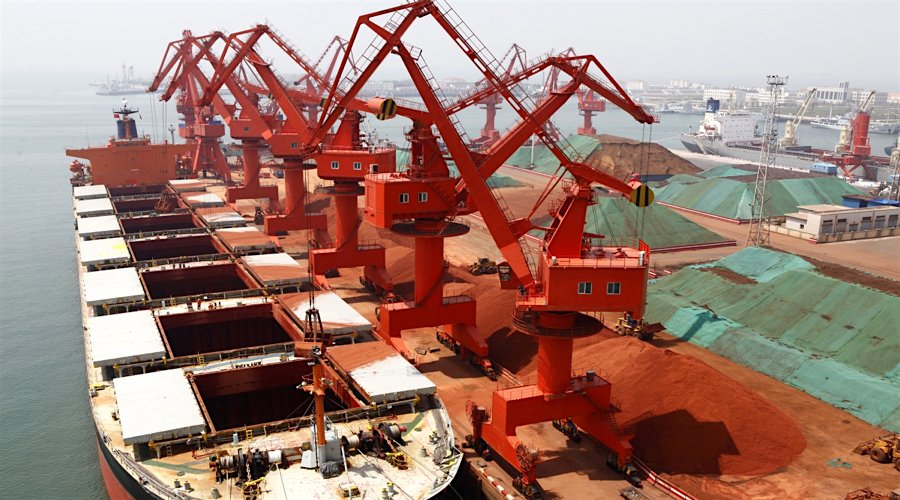RIO DE JANEIRO, BRAZIL – Good news for global inflation and bad news for mining company shareholders. The outlook for iron ore over the next 12 months is for greater supply and, therefore, further price declines.
Since June, when it reached 220 dollars a ton, the commodity’s price has lost strength, returning to the level of a year ago. On Friday the 17th, the iron ore price fell 4.91% in the Port of Qingdao, to 101.95 dollars a ton.
China’s growth is vital to ore pricing. However, the outlook, which is not very encouraging for producers, can be tempered if China carries through with the determination to contain the cooling of its economy. And for now, revisions to China’s GDP are going downward, albeit without exaggeration.
“There is already a concern within the Chinese government about the economy’s cooling, and some economic stimulus is expected after discussions with local governments. But the perspective is that the infrastructure and manufacturing sectors gain traction in 2022 and steel production should accelerate after the Beijing Winter Olympics at the end of February next year,” assesses Gilberto Cardoso, executive director of Tarraco Commodities Solutions.
within this scenario, the demand for ore rises and can give some support to prices.

Cardoso speaks with knowledge: he is a specialist who has worked for ArcelorMittal Mining, Anglo American, Accenture Strategy, Trading & Investments, Banif Securities, and Vale/Caemi, in several countries, besides being a metallurgical engineer from the Federal University of Rio de Janeiro.
He adds that, at the end of 2022, there will also be a definition of the presidential succession in China – the choice of a new leader or the reappointment of Xi Jinping to the post. Traditionally, at times of political renewal, China shows strong economic growth.
However, this outlook becomes uncertain in the face of the new surge of Covid-19 in the world’s second-largest economy by the Delta variant.
The closure of tourist sites, the cancellation of cultural events, and new travel restrictions have led Nomura Holdings to lower its growth projection for the third quarter of 20202 from 6.4% to 5.1% and the expansion in the last three months of the year to 4.4% from the previous estimate of 5.3%.
Bloomberg reports that for the full year 2021, Nomura cut its GDP expansion forecast from 8.9% to 8.2%.
In the report distributed by Ohmresearch, Gilberto Cardoso warns, however, about the heavy hand of the Chinese government, which initially ordered steel mills to ensure that annual steel production in 2021 remains at a similar level to last year.
However, he assesses that should the Chinese government restrict steel production, the ore price could stand at US$120 per tonne by December for low-grade or around US$155 for high-grade products.
The Tarraco Commodities Solutions expert estimates that steel mills’ margins remain firm, with ore priced at about $160 a ton. This level guarantees profitability for investors despite a reduction in capacity utilization.
The mining company Vale (VALE3), on the other hand, may continue with attractive prospects for its shares even if the ore remains quoted around 100 dollars a ton, according to the assessment of analysts Leonardo Correa and Caio Greiner, from BTG Pactual (BPAC11).
In a report released this week, analysts warn that the company is highly undervalued even in conservative scenarios for iron ore prices.
In BTG’s calculations, Vale would be able to generate an Ebitda (earnings before interest, taxes, depreciation, and amortization) of US$27 billion and end 2021 with cash even with ore priced at US$100 a ton.
“For us, the most important thing is that management remains highly disciplined in capital allocation and should continue to execute an asset-light business model, which implies returning returns to shareholders,” they said in a report.
Vale, by the way, announced on Thursday night, September 16, that it would pay R$40.2 billion (8.1083 reais per share) in dividends on September 30. The amount represents a dividend yield of about 9%, which is considered high by BTG’s equity research team.

